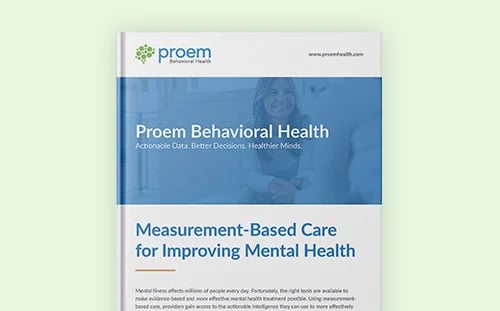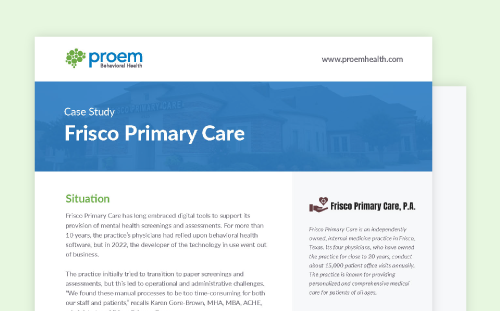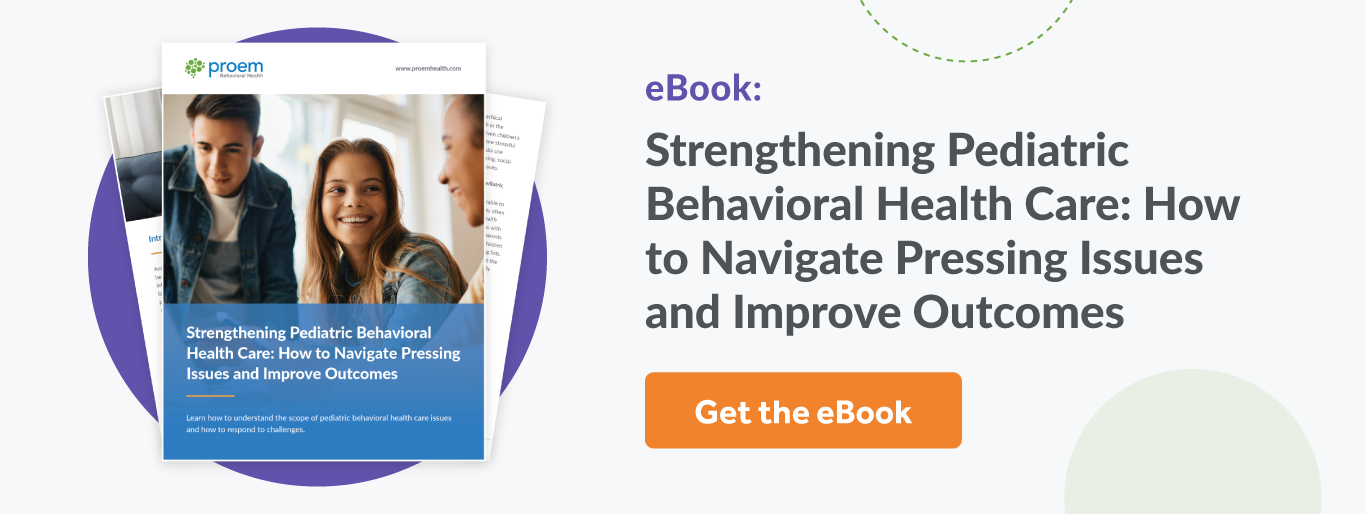Technology has the potential to revolutionize pediatric behavioral health care and has already begun to transform the delivery of mental health care to children and adolescents. By bringing effective tools into provider offices and patient homes, technology can remove treatment access barriers and other obstacles, making therapy feel more comfortable and successful for children who need it.
Improving Pediatric Mental Health by Decreasing Youth Resistance to Treatment
Today's digital natives often use their mobile devices as a refuge from the world of adult demands. Online therapy can serve as a way of meeting children and youth on that home turf and hopefully reducing resistance to treatment.
Video Interactions as a 'Safe Space'
"For many children with anxiety, their [mobile] device is an escape, their happy place," says Helen Spiers, head of counseling at Mable Therapy, in a recent Medtech News article. "If counselors can engage with them in this psychologically safe place, then half the battle has been won."
Most adolescents already use video chat to have meaningful conversations with close friends. Such comfort with video chatting may be part of why, as Spiers points out, online counseling feels less stigmatized for youth as it may be for adults. This increased social acceptance is critical, given teenagers' need for peer acceptance.
Increased Agency
Online therapy also helps youth to feel more in control of the situation and their experience. At in-person sessions, young clients must enter the therapist's space. Sitting in an unfamiliar office can feel intimidating and put the child or teen on the defensive.
By meeting online, the child or teen knows they have the option to put the phone down or even sign off if things get too overwhelming. With that awareness of control, they can engage more easily and on their own terms. And since they are in a familiar space, they are less likely to be distracted by their surroundings, thus allowing the child or adolescent to focus more on the virtual behavioral health session.
Healing Through Digital Therapeutics
In addition to online psychotherapy sessions, evidence-based digital therapeutics can increase access to care for young people These software applications have enormous potential for pediatric providers whose patients have probably been playing on tablets and smartphones since they could walk.
According to a 2020 editorial in the Journal of Child Psychology and Psychiatry, "Digital mental health interventions and tools have the potential to … go beyond simply replicating traditional face-to-face interventions online by providing interventions that are more effective, more accessible and more cost-effective."
Games and apps feel familiar to young clients and can make the counseling experience more enjoyable. And since 95% of teenagers have smartphones, these interventions are widely accessible.
Still, such applications are mainly unregulated and not always developmentally appropriate for young clients. It's important for providers to know about these apps — not only to recommend them as appropriate but to understand what youth might discover on their own.
Closing the Accessibility Gap in Behavioral Health Pediatrics
Lack of care access is helping drive a serious pediatric mental health crisis in the United States. Limited insurance coverage and a provider shortage mean many children don't receive the necessary care or receive it in a timely manner.
Geography and transportation add to the pediatric behavioral health barrier. There are 150 million people living in federally designated areas with a shortage of mental health professionals. Then there are those who are in areas with adequate pediatric behavioral health professionals but who do not have the means to get their children to a therapist's or psychiatrist's office for regular treatment.
Such an access gap is even more pronounced for children with comorbid mental health conditions, which are extremely prevalent in the young. In a 2020 study, more than 71% of young people with mood disorders also presented with behavioral or anxiety disorders. Another study found a 30% to 50% risk of mental disorders in children with intellectual disabilities.
Youth behavioral health care already has an added complexity, given the need to integrate the child's developmental stage. Each cooccurring disorder makes the treatment plan even more complex and usually requires specialized expertise.
Without virtual psychotherapy, children and families are limited to seeing the nearest provider instead of the best one for their needs. Technology expands the scope of access and allows families to connect with a specialist, often without the lengthy wait times associated with in-person treatment.
Improving Diagnosis and Intervention Rates
The pediatric behavioral health disparity also means a diagnosis disparity, contributing to delayed treatment and potentially worse outcomes.
The peak age of mental disorder onset is 14.5 years. Almost half of all mental illnesses begin before age 18. Yet the average time from symptom onset to correct diagnosis is 11 years. The more children and adolescents providers can screen, the more that gap shrinks.
Increasing Screening Rates
Digital screening tools can help providers reach and accurately diagnose children who might otherwise fall through the cracks. These brief assessments are easy to integrate into appointment check-in and screening questionnaires, similar to a standard COVID-19 screening.
Technology can turn mental health assessments into a routine part of the care workflow. Patients can complete the required questionnaire at home or in the office, depending on the provider's preferred workflow. Primary care providers, clinics, and even schools can introduce these solutions and identify more children who need help.
Improving the Usefulness of Results
Unlike conventional screening handouts, which patients often complete in hard (paper) copy, providing a child mental health assessment online supports better data processing. Providers see results as a whole (rather than in isolation) to allow for better, timelier diagnoses.
This approach to behavioral health assessment can potentially reduce the risk of misdiagnoses in pediatrics, particularly among diagnoses with psychopathological overlaps. Correct diagnosis strongly correlates with improved outcomes, particularly in commonly misattributed conditions like attention deficit hyperactivity disorder and early onset bipolar disorder. By considering assessment results holistically, clinicians can better identify symptom sources and avoid recommending incorrect or suboptimal treatments.
Implementing Behavioral Health Technology in Pediatrics
Young people already understand the connective power of technology. For providers, that connection can be the gateway to better and more appropriate diagnoses and treatments. It can also increase the number of children who can get the care they need when they need it.
Embracing change is never easy, but Proem makes digital interventions for pediatric behavioral health more accessible. We help you deliver better, more integrated pediatric behavioral health care by providing the world’s leading, digital, evidence-based behavioral health scales and measurements.
Proem offers a unified solution that any practice can implement. Contact us today and learn how we can help you give young patients the care they need.





.png)










